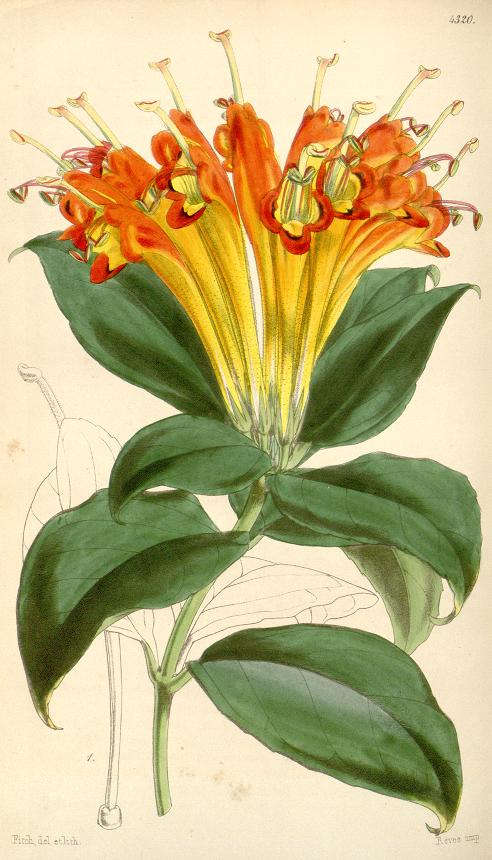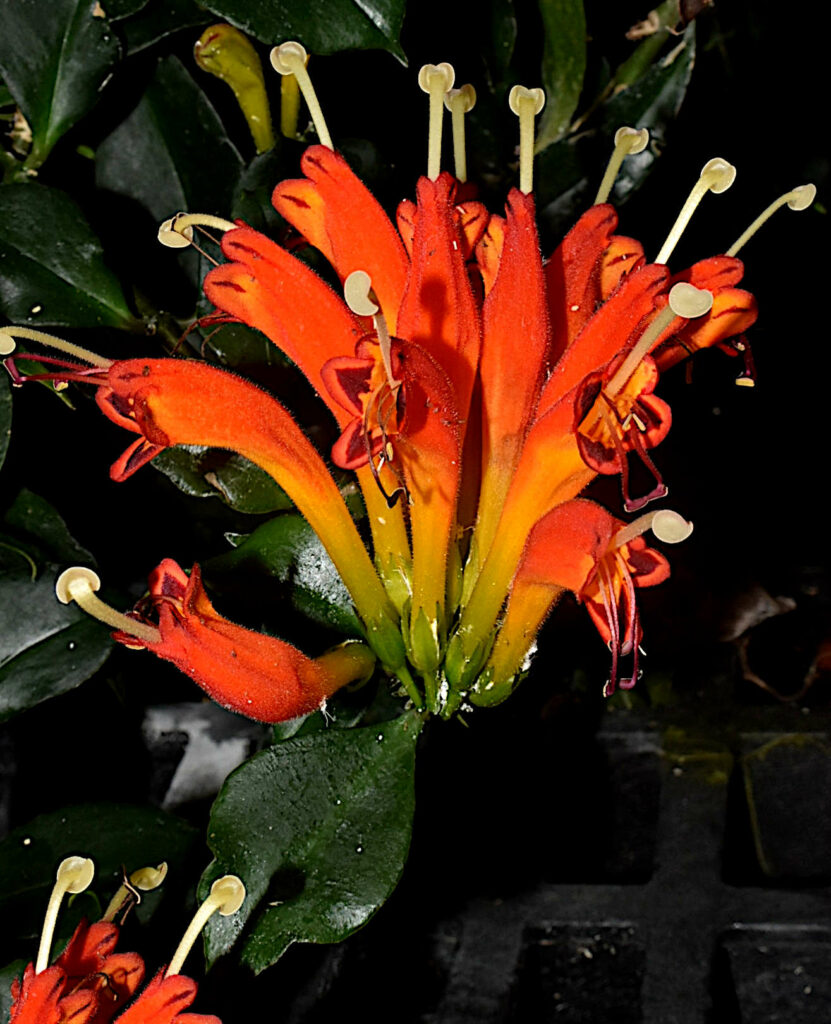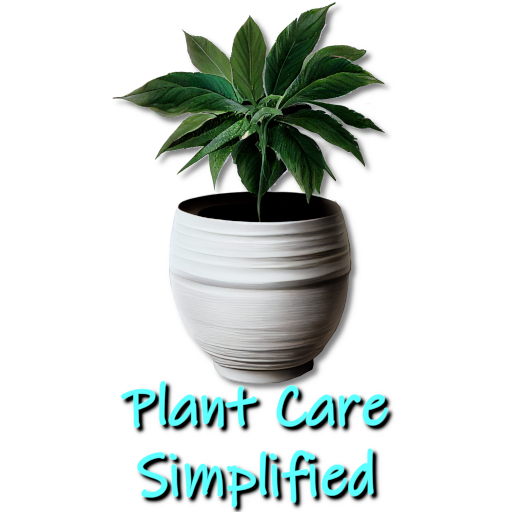The Showy Lipstick Plant (Aeschynanthus speciosus): A Stunning Addition to Your Home
Kim is passionate about helping people create beautiful, healthy indoor spaces that are filled with plants. Kim believes that plants make us happier, healthier human...
If you are looking for a low-maintenance plant that can add a splash of color and tropical flair to your home, you might want to consider the showy lipstick plant (Aeschynanthus speciosus). This hanging plant has glossy leaves and tubular flowers that resemble lipstick tubes emerging from dark calyxes. The flowers are usually red, but some varieties have yellow or dark orange hues.
The showy lipstick plant is easy to grow and care for, and it can bloom from summer to autumn, attracting hummingbirds and butterflies. In this article, you will learn more about the origins, natural habitat, and history of the showy lipstick plant, as well as how to grow, propagate, and troubleshoot this beautiful flowering plant.
Origins and Natural Habitat of the Showy Lipstick Plant

The showy lipstick plant belongs to the genus Aeschynanthus, which contains over 150 (some estimate about 185) species of tropical plants native to Southeast Asia. The genus name comes from the Greek words “aeschyno”, meaning “to be ashamed”, and “anthos”, meaning “flower.” This refers to the shy nature of some species that hide their flowers under their leaves. However, the showy lipstick plant is not one of them. It proudly displays its flowers on long stems that cascade over the edges of its pot or basket.
Endemic to Malaysia, where it grows as an epiphyte on trees, the showy lipstick plant is found in moist, shady rainforests. Epiphytes are plants that grow on other plants without harming them or taking nutrients from them. They use their roots to anchor themselves and absorb moisture and nutrients from the air, rain, or debris. The plant has adapted to this lifestyle by developing leathery leaves that store water and prevent evaporation. In its natural environment, it also has a symbiotic relationship with ants, which nest in its hollow stems and protect it from herbivores.
History of the Showy Lipstick Plant as a Popular Houseplant
The showy lipstick plant was first described by the British botanist Sir William Jackson Hooker in 18471. He named it Aeschynanthus speciosus, meaning “the splendid Aeschynanthus.” He was impressed by its striking flowers, which he compared to those of the fuchsia describing it as
and is unquestionably the most beautiful species
Hooker, Sir William Jackson: Curtis's Botanical Magazine, Tab 4320, Aeschynanthus speciosus, London, 1847
He also noted that it was cultivated in the gardens of Penang, Malaysia, where it was introduced by Chinese traders.
During the late 19th and early 20th centuries, the showy lipstick plant became popular as a houseplant in Europe and America . It was prized for its exotic appearance and easy cultivation. It was also used as a cut flower for bouquets and corsages. However, it fell out of fashion after World War II, when new hybrids and varieties of other Aeschynanthus species became more widely available.
Today, the showy lipstick plant is still grown by some enthusiasts and collectors who appreciate its unique beauty and history. It is also valued for its medicinal properties in traditional Malay medicine, where it is used to treat wounds, ulcers, coughs, and asthma.
The Appearance Showy Lipstick Plant

The plant has stems that are about two feet long. The older part of the stem is hard and woody, while the younger part is soft and green. The leaves are opposite or in groups of three, and they are very close to the stem. The leaves near the flowers are in a circle of four to eight. The shape of the leaves is between oval and long, and they have a sharp tip. The leaves are very thick and have small teeth on the edge.
The flowers are at the end of the stem, and there are six to twenty of them. They are big, pretty, and eye-catching, and they have a little bit of hair on them. The flower stalk is short and straight, and it has only one flower on it. The flower cup has five parts that are deep and narrow, and they stand up straight. The flower is between three and four inches long and is orange with a red tip.
The flower tube is thick and curved down at the end, and it is round at the back and flat at the front (inside it has glands). The mouth of the flower is slanted, and it has four parts that spread out, and they are round. The top part is split in two: each part has a half-moon shape and a black line that separates the orange and red colors. The part that makes pollen and seeds stick out of the flower. The part that makes seeds is long and thin and sits in a fleshy cup or gland. The part that receives pollen has a groove across it.
How to Grow and Care for the Showy Lipstick Plant

Caring for the showy Lipstick plant is not difficult if you provide it with the right conditions. Here are some tips on how to make your showy lipstick plant thrive:
- Light: The showy lipstick plant prefers bright but indirect light. Avoid direct sunlight, which can scorch its leaves and fade its flowers. A bright spot near a window with a sheer curtain or a shaded porch is ideal. You can also use artificial lights such as fluorescent or LED lamps to supplement natural light.
- Water: The showy lipstick plant likes moist but well-drained soil. Water it thoroughly when the top inch of the soil feels dry to the touch, and let the excess water drain out of the pot or basket. Do not let the soil become soggy or waterlogged, as this can cause root rot. Reduce watering in winter, when the plant is dormant.
- Humidity: The showy lipstick plant enjoys high humidity levels of 60% or more. You can increase humidity by misting the plant regularly with a spray bottle, placing it on a tray of LECA pebbles with water to create a natural humidifier, or using a humidifier. Avoid placing the plant near heaters, air conditioners, or drafts that can dry out the air.
- Temperature: The showy lipstick plant likes warm temperatures between 65°F and 75°F (18°C and 24°C). It can tolerate lower temperatures down to 50°F (10°C), but not frost or freezing. Keep it away from cold windows or doors in winter, and move it indoors if you live in a cold climate.
- Fertilizer: Lipstick plants benefit from regular feeding during the growing season, from spring to autumn. Use a balanced liquid fertilizer diluted to half strength every two weeks or a slow-release granular fertilizer every two months. Do not fertilize in winter when the plant is resting.
- Pruning: The showy lipstick plant does not require much pruning except to remove dead or damaged leaves and stems. You can also trim back the stems to maintain the shape and size of the plant or to encourage branching and flowering. Prune your Lipstick plant in late winter or early spring before new growth begins.
- Repotting: The showy lipstick plant does not mind being slightly root-bound, but it may need repotting every two or three years when it outgrows its pot or basket. When you repot your Lipstick plant, choose a pot or basket that is one size larger than the previous one, with drainage holes at the bottom. Use a well-draining potting mix that contains peat moss, perlite, and vermiculite. Gently loosen the roots and remove any dead or rotten ones. Place the plant in the center of the new pot or basket and fill with soil. Water well and place in a shady spot for a few days to allow the plant to adjust.
How to Propagate the Showy Lipstick Plant
Stem cuttings can easily propagate the showy lipstick plant. Here are the steps to follow:
- Choose a healthy stem that has at least three or four nodes (the points where leaves emerge). Cut it with a sharp, sterile knife or scissors, about 4 to 6 inches (10 to 15 cm) long. Remove the lower leaves and any flowers or buds.
- Dip the cut end of the stem in rooting hormone powder or gel, which will help it form roots faster. You can also skip this step if you don’t have rooting hormone.
- Insert the stem into a small pot or container filled with moist potting mix. Make sure that at least one node is buried in the soil. You can also use a glass of water instead of soil, but change the water every few days to prevent algae and bacteria growth.
- Cover the pot or container with a plastic bag or dome to create a mini greenhouse. This will keep the humidity high and prevent the cutting from drying out. Poke some holes in the bag or dome for ventilation.
- Place the pot or container in a warm and bright spot but out of direct sunlight. Keep the soil for your Lipstick plant moist but not soggy. Check for roots after four to six weeks by gently tugging on the stem. If you feel resistance, it means that roots have formed.
- Once the roots are about an inch (2.5 cm) long, you can transplant the cutting into a larger pot or basket with fresh potting mix. Follow the same care instructions as for the mother plant.
Diseases and Pests of the Showy Lipstick Plant
The showy lipstick plant is generally healthy and resistant to most diseases and pests, but a Lipstick Plant can still suffer from some problems if not cared for properly. Here are some common issues and how to deal with them:
- Root rot: This is caused by overwatering or poor drainage, which leads to fungal infection of the roots. The symptoms include yellowing and wilting of the leaves, and mushy or black roots. To prevent root rot, water only when the soil is dry, and use a well-draining potting mix and pot or basket. To treat root rot, remove the plant from its pot or basket and cut off any dead or rotten roots. Repot in fresh soil and reduce watering until new growth appears.
- Leaf spot: This is caused by fungal or bacterial infection of the leaves, which results in brown or black spots on the leaf surface. The infection can spread through splashing water or contaminated tools. The symptoms include yellowing and dropping of affected leaves. To prevent leaf spot, avoid wetting the leaves when watering, and sterilize your tools before using them on different plants. To treat leaf spot, remove any infected leaves and spray the plant with a fungicide or bactericide.
- Aphids: These are small insects that suck sap from the stems and leaves of plants, causing them to curl, distort, or drop. They can also transmit viral diseases and secrete honeydew, which attracts ants and fungal growth. The symptoms include sticky residue on the leaves and stems, and clusters of tiny green, yellow, black, or white bugs on the undersides of leaves. To prevent aphids, inspect your plants regularly for signs of infestation and isolate any affected plants from others. To treat aphids, wash them off with a strong jet of water, wipe them off with a cotton swab dipped in alcohol, or spray them with insecticidal soap or neem oil.
- Mealybugs: These are white cottony insects that suck sap from the stems and leaves of plants, causing them to wilt, yellow, or drop. They also secrete honeydew, which attracts ants and fungal growth. The symptoms include white fluffy masses on the stems and leaves and sticky residue on the plant and nearby surfaces. To prevent mealybugs, inspect your plants regularly for signs of infestation and isolate any affected plants from others. To treat mealybugs, wipe them off with a cotton swab dipped in alcohol or spray them with insecticidal soap or neem oil.
Why the Showy Lipstick Plant is a Good Houseplant

The showy lipstick plant is a good houseplant for many reasons. Here are some of them:
- It is easy to grow and care for, as it does not have high demands for light, water, or fertilizer.
- It is adaptable to different environments, as it can tolerate a range of temperatures and humidity levels.
- It is attractive and colorful, as it has tropical foliage and red flowers that contrast well with its dark green leaves.
- It is long-blooming, as it can produce flowers from summer to autumn, adding interest and beauty to your home.
- It is versatile, as it can be grown in pots or baskets, on shelves or tables, or in hanging baskets or macramé hangers.
- It is beneficial, as it can purify the air by removing toxins and pollutants, and provide nectar for pollinators such as hummingbirds and butterflies.
Final Thoughts
The showy lipstick plant is a stunning addition to your home, as it can brighten up any space with its cascading plant habit and showy flowers. It is also easy to grow and care for, as it does not require much attention or maintenance. If you are looking for a tropical plant that can bring some color and charm to your home, you should give the showy lipstick plant a try. You will definitely consider it one of your best decisions!
Other Varieties
- Aeschynanthus evrardii Cassiopeia Lipstick Plant
- Black Pagoda Lipstick Plant: The Ultimate Guide
- The Unique Thai Pink Lipstick Plant (Aeschynanthus Thai Pink)
- Curly Lipstick Plant: Unraveling the Mystique of The Fascinating Twist
- Aeschynanthus Japhrolepis: The Lipstick Plant with a Shameful Secret
- The Gracilis Lipstick Plant: The Perfect Houseplant
- Mona Lisa Lipstick Plant (Aeschynanthus speciosus)
References
- Hooker, Sir William Jackson: Curtis's Botanical Magazine, Tab 4320, Aeschynanthus speciosus, Vol III, Series 3, London, 1847
Kim is passionate about helping people create beautiful, healthy indoor spaces that are filled with plants. Kim believes that plants make us happier, healthier human beings, and she loves sharing her knowledge with others so they can experience the joys of plant care for themselves. <a href="https://plantcaresimplified.com/kim-marson/">Read more</a>
More Posts